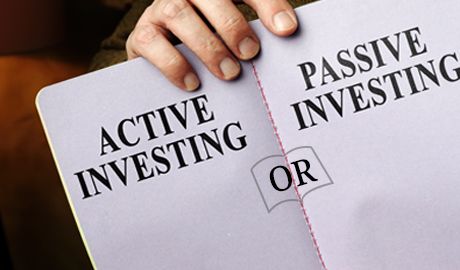
Published on April 17, 2024 at 3:49:38 AM
Should You Be An Active Investor or Stay Passive?
In the dynamic world of investing, it all comes down to understanding two key games – active and passive investment strategies.
Each of these has its own perks and pitfalls, shaping up differently based on what you want from your investments.
This article will cover all aspects and give you some tips so that you can sail smoothly towards your financial goals.
Active Investing: Steering Your Financial Destiny
It needs a dynamic approach - you can't just sit back and let things happen; it's all about taking charge and steering towards success.
But remember, every decision counts! Unlike passive strategies that rely on market indices as their guiding stars, active investing demands a more involved role from its practitioners.
This involves not just a cursory glance over financial news or periodic portfolio rebalancing but diving deep into the intricate world of finance. This strategy, at its core, is about doing your homework.
We don't just skim the surface by understanding current market trends and how they impact each opportunity. We also consider things like company performance, economic indicators, geopolitical developments and much more.
For instance, if certain sectors show signs of weakening due to economic downturns or regulatory changes, an active investor might reduce exposure there and instead capitalise on emerging opportunities elsewhere
It takes time and effort but can maximise returns. By using an array of
tools such as fundamental analysis—evaluating companies' financial health through balance sheets and income statements—and technical analysis—the study of statistical trends from trading activity—one can make informed decisions.
Also active investing has higher transaction costs due to frequent buying/selling activities which can eat into profits if not managed wisely.
Advantages of active investing include:
• Potential for Higher Returns: By targeting market inefficiencies and undervalued stocks, active investors often strive to outperform market benchmarks, potentially leading to higher returns.
• Flexibility and Adaptability: Active investors can quickly adapt their portfolios in response to market changes, taking advantage of emerging trends and shifting economic landscapes.
However, active investing also presents challenges, such as:
• Higher Costs: This approach often incurs more significant expenses, including management fees and trading costs, which can impact overall returns.
• Risk of Underperformance: Despite the potential for higher returns, there's always the risk of not meeting market benchmarks, leading to possible losses.
Passive Investing: Embracing Market Rhythms
Passive investing is often characterised by a "set-and-forget" mentality and is not aimed at outperforming the market. Instead, it's focused on moving in tandem with it.
Passive investors typically channel their funds into index funds or exchange-traded funds (ETFs) that aim to replicate the performance of specific market indices or asset classes.
For instance, an investor interested in mirroring the trajectory of the Nifty 50 would invest in an ETF that tracks this index and achieve broad market exposure through a single investment.
Cost-effectiveness
Active fund management involves higher operational costs due to frequent trading activities and exhaustive analysis performed by fund managers—expenses which are ultimately borne by investors through higher fees.
In contrast, passive funds boast lower expense ratios since they involve less trading activity and require no such intricate decision-making process.
Moreover, even champion investors argue for passive investing’s potential to yield consistent long-term returns—a claim supported by numerous studies indicating that actively managed funds frequently underperform their benchmark indices over extended periods.
This is partly due to cost differences but also reflects inherent challenges faced by even seasoned professionals when attempting to consistently predict market movements.
Despite these benefits, critics point out limitations within this approach—including reduced flexibility during turbulent markets—and advocate for a balanced portfolio incorporating both strategies according to individual goals and risk tolerance levels.
Key benefits of passive investing include:
• Lower Costs: Passive strategies typically involve lower fees and expenses, as they require less frequent trading and management.
• Consistent Market Returns: By tracking market indices, passive investing offers returns that closely align with those indices, reducing the risk of underperformance.
However, it's not without its drawbacks:
• Limited Control: Investors have minimal influence over the individual securities in their portfolio, as these are dictated by the tracked index.
• Vulnerability to Market Downturns: Passive portfolios are subject to market fluctuations, which can lead to declines during bear markets.
Balancing the Scales
Both investment strategies have their merits and limitations.
Active investing offers the potential for higher returns and adaptability but comes with higher costs and risks.
Passive investing, on the other hand, provides simplicity, lower costs, and consistent returns but lacks flexibility and control.
Tailored Investment Path
Investing isn't a one-size-fits-all scenario. The choice between active and passive strategies depends on individual goals, risk tolerance, and investment preferences.
While some may prefer the active route's excitement and potential rewards, others might find solace in the stability of passive strategies.
A blended approach, incorporating elements of both strategies, can also create a more balanced and diversified portfolio.
Invest wise with Expert advice
Latest Articles
Join us & get started

